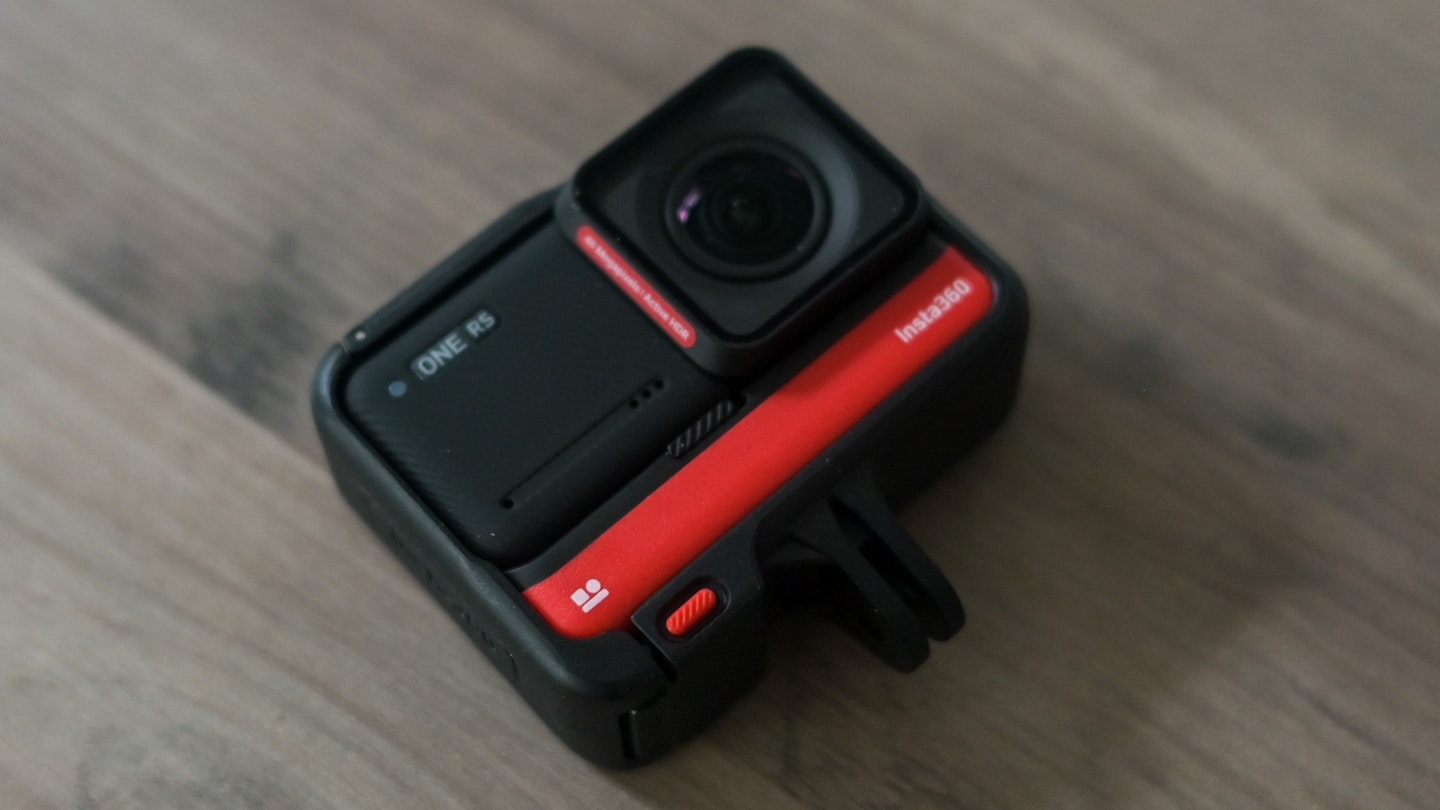The Insta360 R is one of the most interesting action cameras on the market – and the RS is its supercharged replacement. Switching things up with a unique module option, the R gives you the benefits of a 360 camera and a more conventional 4K action camera. Since its release, it's slotted into many photographer’s cases as a solid alternative to the standard GoPro set-up, and thanks to its 360-degree capability it’s also been a big hit for bikers too. After all, it’s one of the only action cameras that’ll look into the corners and give you that GTA-esque, third-person perspective.
So where does the RS fit in? As you can probably tell from the name, Insta360’s latest device is designed to move the game on, with an improved spec sheet and smidge more features. But is it worth upgrading? Read our review to find out.
Note: This review was originally published in July 2022.
Verdict
The Insta360 ONE RS is a certified improvement over the previous iteration, improving the camera in a number of handy ways and offering an exceptional perspective on the footage. While it's not quite as good as an offering from GoPro, the ONE RS is a great addition to any videographer's arsenal.
Buy the Insta360 ONE RS 4K Edition (£279) or Insta360 ONE RS Twin Edition (£499) from Amazon.
The Quick Version
If, like me, you've used the Insta360 ONE R, then you're going to find the experience very similar to the RS - which is no bad thing. The Twin Edition I reviewed uses a cage design to hold itself together, which though a little inelegant is an improvement over previous Insta360 devices. The RS has a better battery and sensor than its predecessor, too, and can capture 4K at 30fps. The screen on the RS is welcome, though linking the camera with a smartphone provides a better idea of what the camera is seeing.
Out in the real world, the ONE RS delivers consistent and high-quality performance with footage perfect for sharing on social media platforms. The interface with the smartphone really makes the whole process of capturing, viewing and editing footage a cinch. The quality is hard to beat without opting for a GoPro.
It's hard to say it's worth buying if you already own the Insta360 ONE R, but if you're new to the family, then jumping straight for the RS is the way to go.
Related: Insta360 GO 2 review
Build

• Small and light
• Relies on a cage for mounts
• Loads of attachments
The modular construction of the Insta360 R means it’s made of small, light pieces of tech – and the One RS is no different. Consisting of a lens, screen module and battery that sits under both, the Insta360RS feels fragile when in pieces, but more solid when properly configured. Slightly lighter than its predecessor, the design is pretty much unchanged, though edges are sharper rather than rounded and curved.
In the Twin Edition bundle we reviewed, you get two attachments for your camera, a 5.7K 360-degree fish-eye lens, and 4K Boost lens – which can also record widescreen 6K. There’s a 4K-only edition available, and a 1-inch Leica-badged edition, though that’ll set you back £499.99. If you’ve bought the last one, you’ll be pleased to know it’s all backwards compatible with the previous system.
Unlike recent GoPros which feature a mount that folds into the body, the Insta360 RS still relies on a cage to mount to accessories. Still, it’s an improvement over the last iteration; instead of an awkward clamshell-style operation, the RS gets a cage with a side latch.
There’s a lot you’ll want to attach, too, like an included invisible selfie or a range of motorcycle accessories. Just like the R before it, the RS is compatible with Insta360’s Motorcycle Mount bundle. Comprised of a solid-feeling claw and dual-ball mount it can clip onto handlebars, clip-ons, or bits of the frame. Adhesive strips mean it’ll even stick to your helmet if you like.
Specs are a touch better across the board too; the RS gets just over 20% more battery, while the 4K Boost lens uses a 48MP sensor, and can record a 6K widescreen at 24fps, 4K at up to 30fps or – or take 48MP pics. There’s also a third microphone – though not the option to have a dedicated media system like GoPro.
Software is a touch better too; Insta360’s FlowState is available in three forms here; medium, low and high, each offering a different amount of cropping and strength to go with it.
Usability
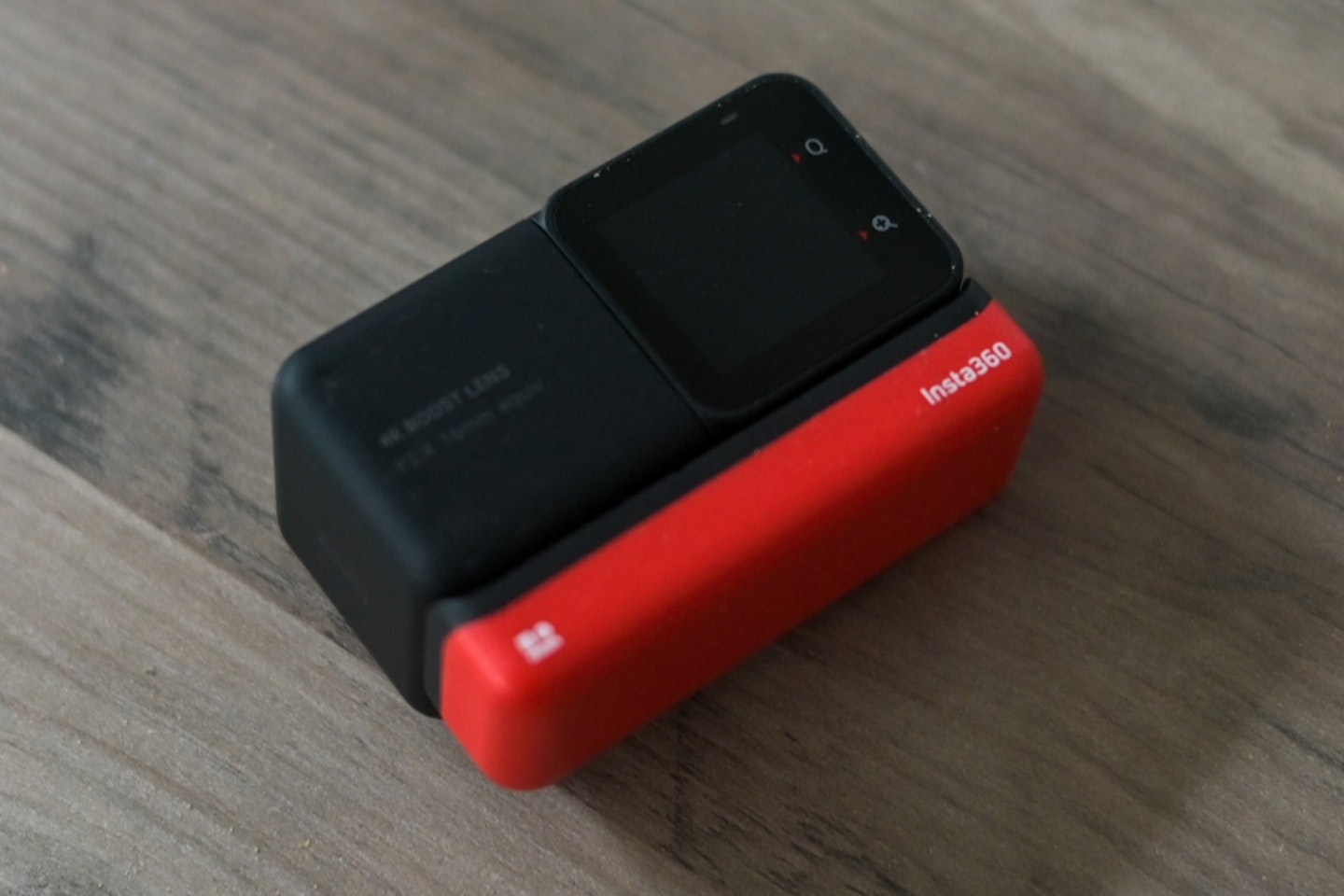
• Same Insta360 operation
• Screen is okay, just a tad fiddly
• Phone connection recommended
If you’ve used the previous Insta360, the RS is no different – and that’s not a bad thing. Each module of the Insta360 system clicks together in a relatively satisfying way, and it’s pretty easy to remove and attach bits and pieces when necessary. The lens can be affixed with a screen facing forward or backwards, and the battery simply sits at the bottom like a skateboard. The only hard and fast rule is one camera to one screen: the latter also houses the SD card and other bits.
Whether or not the screen is helpful for you remains to be seen. At just 1.3-inches, its size comes in handy when you’re carrying the camera or stowing it away – but it’s fiddly to use in practice. Unless you’re paired to the camera, it’s where you’ll frame your footage and swipe between functions; as a result, we’d recommend using a phone connection most of the time. We certainly did.
Performance
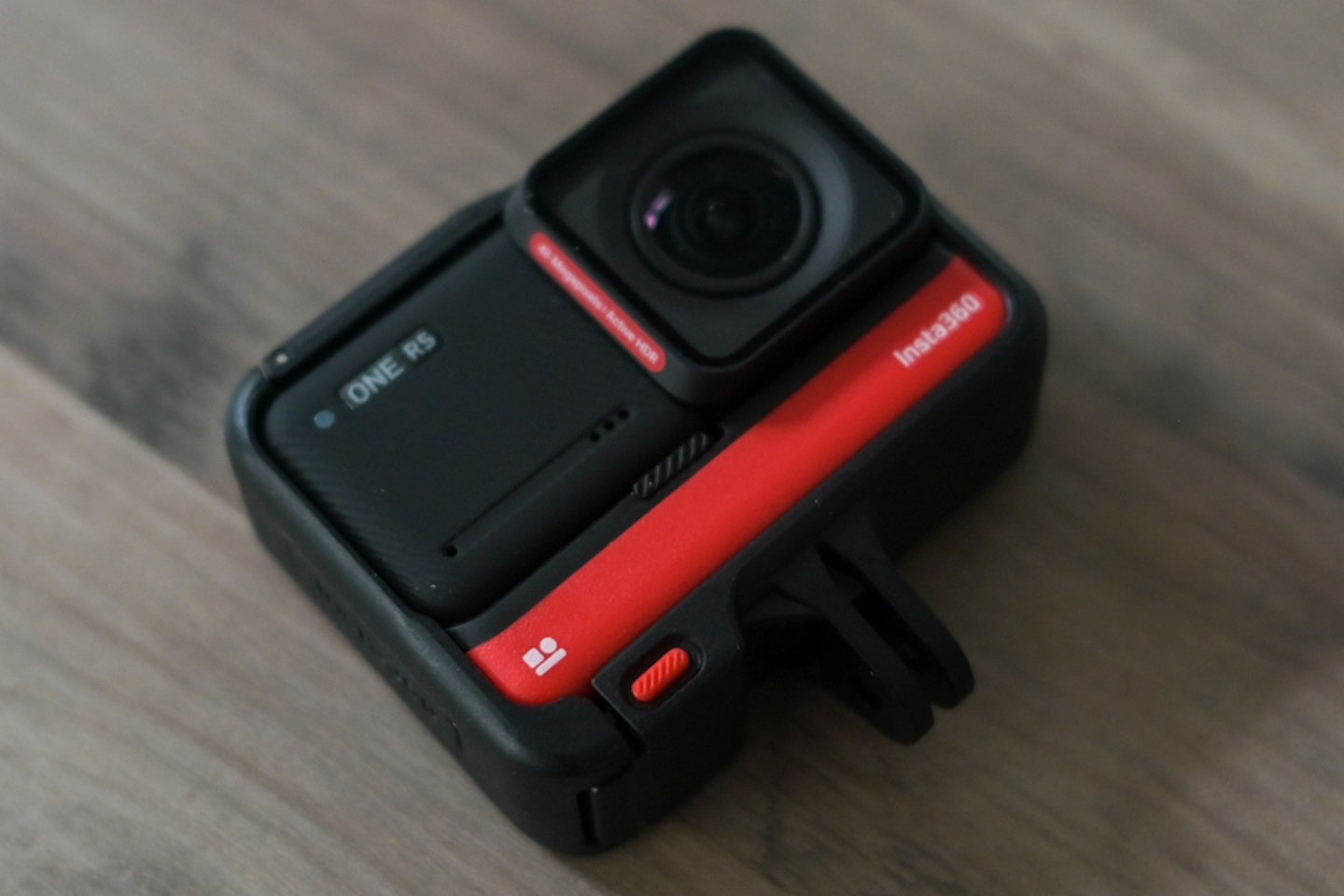
• Perfect footage for viewing on smaller screens, like smartphones
• Quick Wi-Fi
• Easy to handle 360 footage
In practice, the Insta360RS delivers solid results across the board, though you’ll find yourself reaching for it when you’re after more creative shots. The 4K edition provides footage perfect for Instagram, Twitter or even YouTube and in most situations it’s fine. However, if you want more resolution or want to display footage on larger screens, a GoPro with 5.3k recording capability might be a better option.
And 360-degree footage? There’s very little competition if we’re honest. Although Insta360 has other dedicated 360 cameras, nothing has the same balance of price and versatility as the Insta360RS Twin Edition. Footage quality can’t come close to the 4K module (after all its shooting 5.7K across a 360-sphere) but it more than makes up for it overall – and it’s fine on smaller screens anyway.
Thanks to the RS’ quicker Wi-Fi, there’s not a huge gap before recording footage and then exploring it on your smartphone. 360 footage is unwieldy when taken off the camera, but Insta360’s app makes light work of unravelling it. It’s fun to explore your footage after downloading it but by either dragging your footage around – or moving your phone – it’s possible to ‘direct’ your 360 movies. In this way, it’s surprisingly easy to export and upload 360 footage – almost as easy as the 4K footage.
Price and verdict
If you’re comparing 16:9 footage, the Insta360RS doesn’t have the specs to compete with the GoPro’s latest and greatest; at 4K and 30fps, it’s unable to keep up with 5.3K of the HERO 10, which I've previously reviewed. However, look beyond the standard letterbox recording and the Insta360 has a huge amount extra to offer – and at a price which isn’t too far from GoPro’s. Throw in the Insta360 RS’ marginal gains over its predecessor, and it’s an even more compelling option for the most ubiquitous action camera.
What’s more unusual, however, is what the Insta360RS can offer over its predecessor- as that depends on your use case. The system’s FlowState stabilisation is even smoother – and audio is an improvement, though there’s still no dedicated media module. Resolution is improved with the RS thanks to a 6K widescreen mode, though this feature is even more niche than 360 videos.
We found the smoother stabilisation to almost take away some of the excitement from our videos, though they were mainly filmed on a motorbike – not where you want something like a horizon lock.
If you’re yearning for some marginal spec upgrades and the two features above it’s easy to recommend the RS over the S, otherwise it’s a little more difficult…
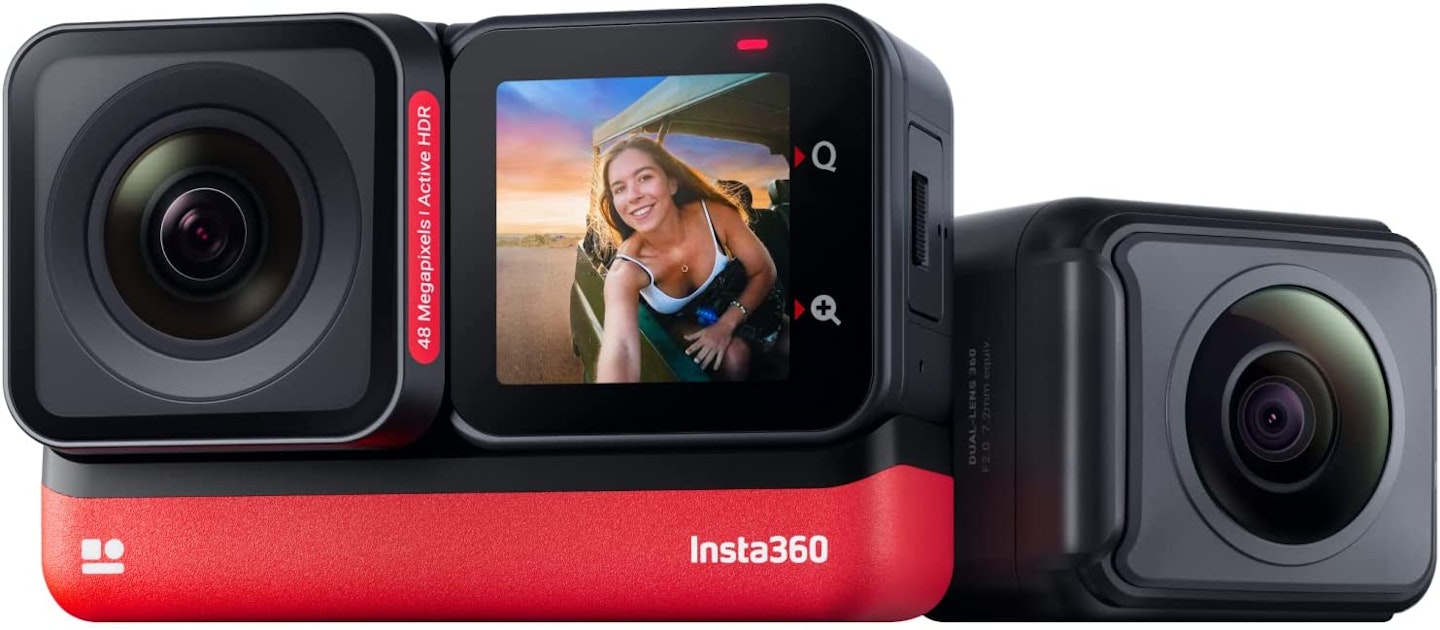
Reviewed.
| Pros | Cons |
|---|---|
| • Incredibly versatile | • Can be fiddly when out and about |
| • 360 camera is unique | • Quality isn’t always as good on larger screens |
| • Works with existing Insta360 gear | • Comes at a price |
| Specifications | |
|---|---|
| Aperture & focal Length: | Aperture – 4K Boost Lens: F2.4. 360 Lens: F2.0 / 35mm Equivalent Focal Length – 4K Boost Lens: 16mm. 360 Lens: 7.2mm |
| Video resolution: | 4K Boost Lens: 6016x2560@25/24fps (under 6K Widescreen Mode), 4000x3000@24/25/30fps, 3840x2160@24/25/30/50/60fps, 2720x1530@24/25/30/60/100fps, 1920x1080@24/25/30/60/120/200fps. 360 Lens: 5760x2880@30/25/24fps, 3840x1920@50/30fps, 3008x1504@100fps |
| Photo resolution: | 4K Boost Lens: 8000x6000 (4:3), 8000x4500 (16:9), 4000x3000 (4:3), 4000x2250 (16:9). 360 Lens: 6080x3040 (2:1) |
| Video modes: | 4K Boost Lens: Standard Video, Slow Motion, Active HDR, Timelapse, TimeShift, Loop Recording, 6K Widescreen, FlowState (in-camera stabilization), Post FlowState (in-app stabilization). 360 Lens: Standard Video, HDR, Timelapse, TimeShift, Bullet Time, Loop Recording |
| Runtime: | 4K Boost Lens: 75 minutes *Tested in lab environment under 4K@60fps FlowState mode. 360 Lens: 82 minutes *Tested in lab environment under 5.7K@30fps mode |
| Storage: | exFAT formatted microSD cards with the UHS-I bus interface and Video Speed Class V30 rating (exactly this class, neither higher or lower) with a max storage of 1TB are recommended. |
| Weight & size: | 4K Edition: 125.3g, 70.1x49.1x32.6mm. 360 Edition: 135.3g, 70.1x49.1x43mm |
More items to consider:

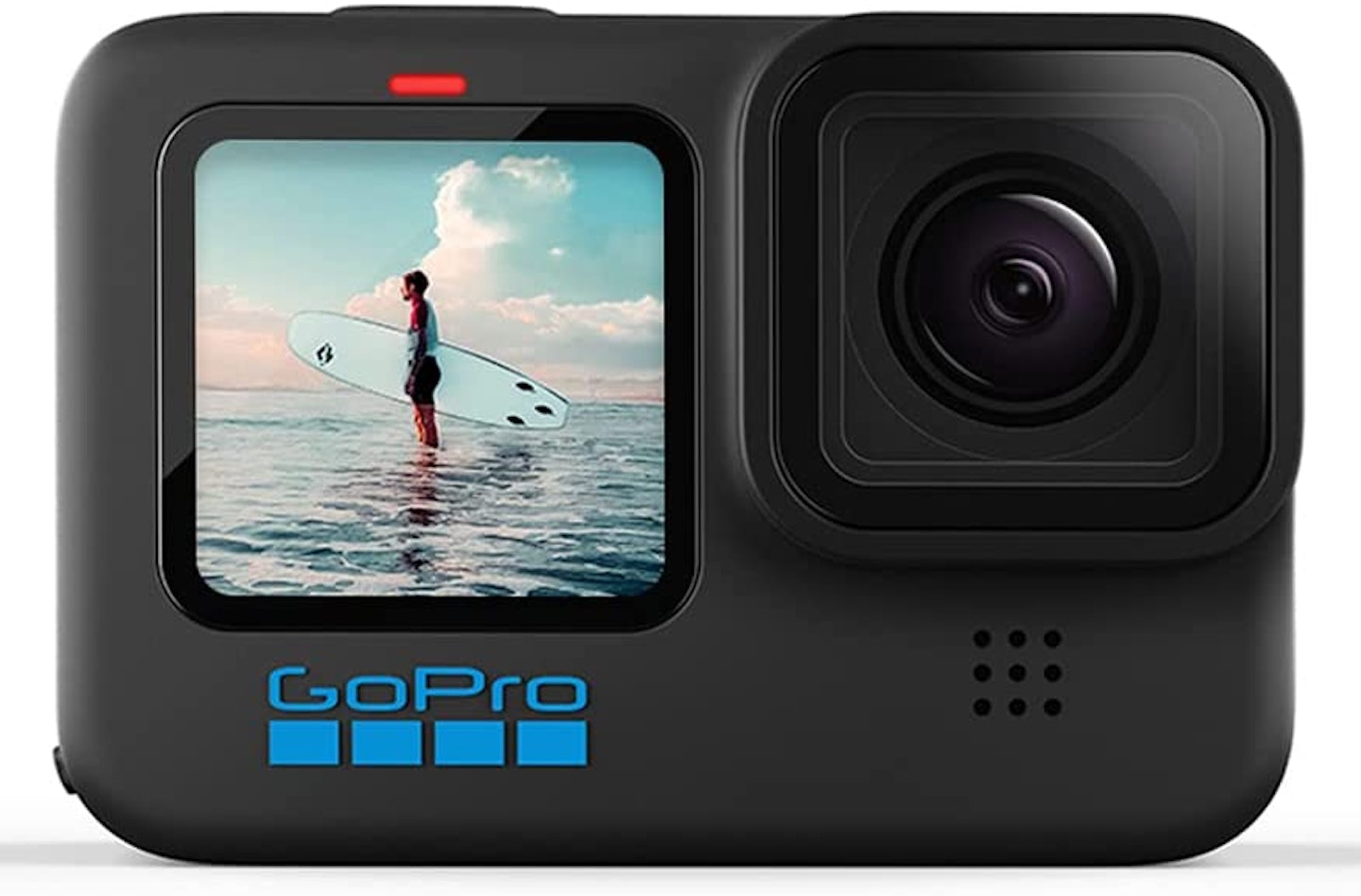
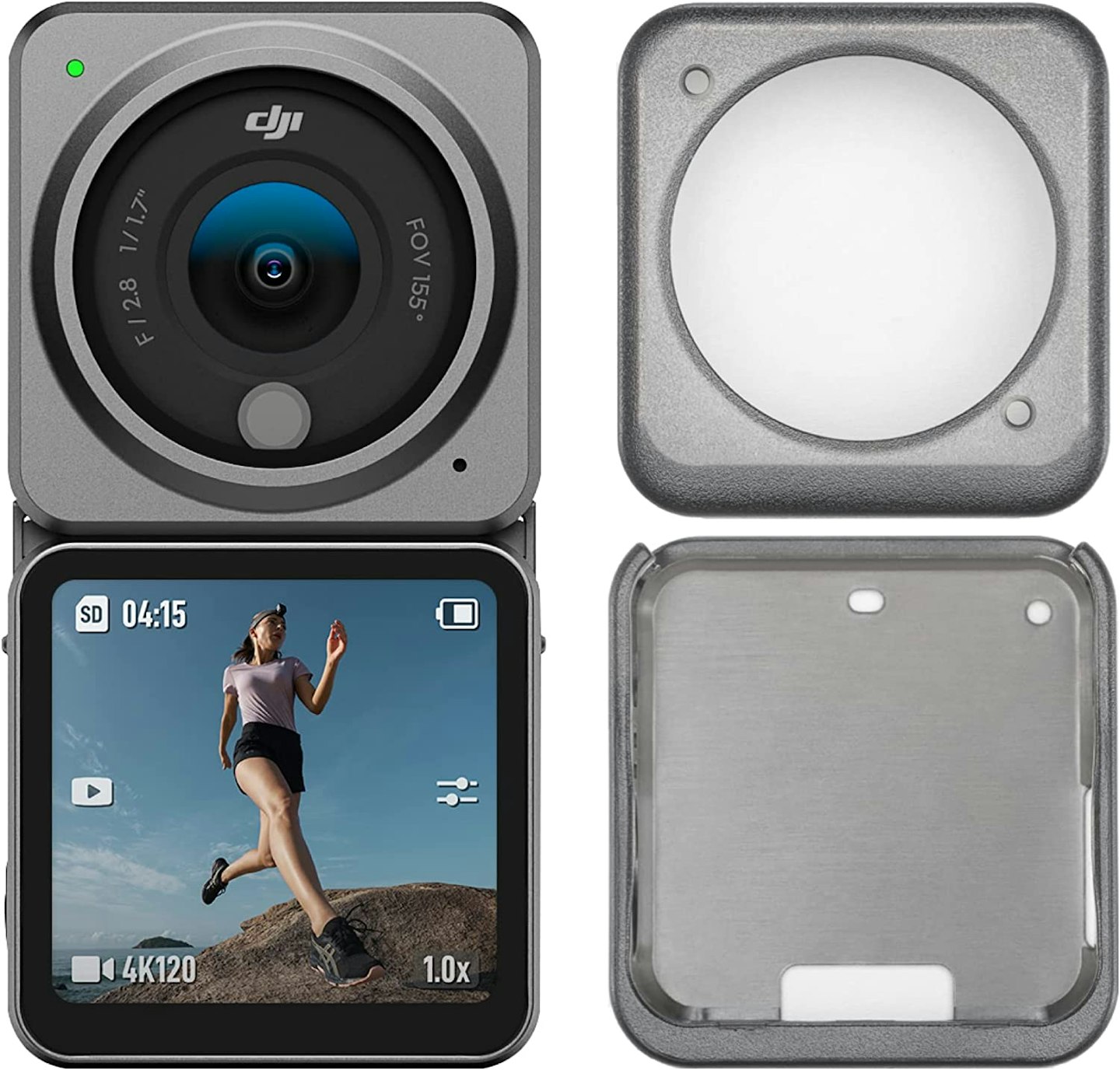
How the product was tested:
The Insta360 RS was tested over a number of weeks in several situations, including motorcycle rides. The camera was used in combination with an iPhone 13. Curtis has previously tested a selection of Insta360 cameras, including the Go 2 and the One R.
Curtis Moldrich has worked in the technology sector for several years, reviewing and testing the best audio gear, laptops and gadgets at titles including The Telegraph, Mixmag and Expert Reviews.
Subscribe to the What’s The Best Newsletter to keep up to date with more of the latest reviews and recommendations from the What’s The Best team.
